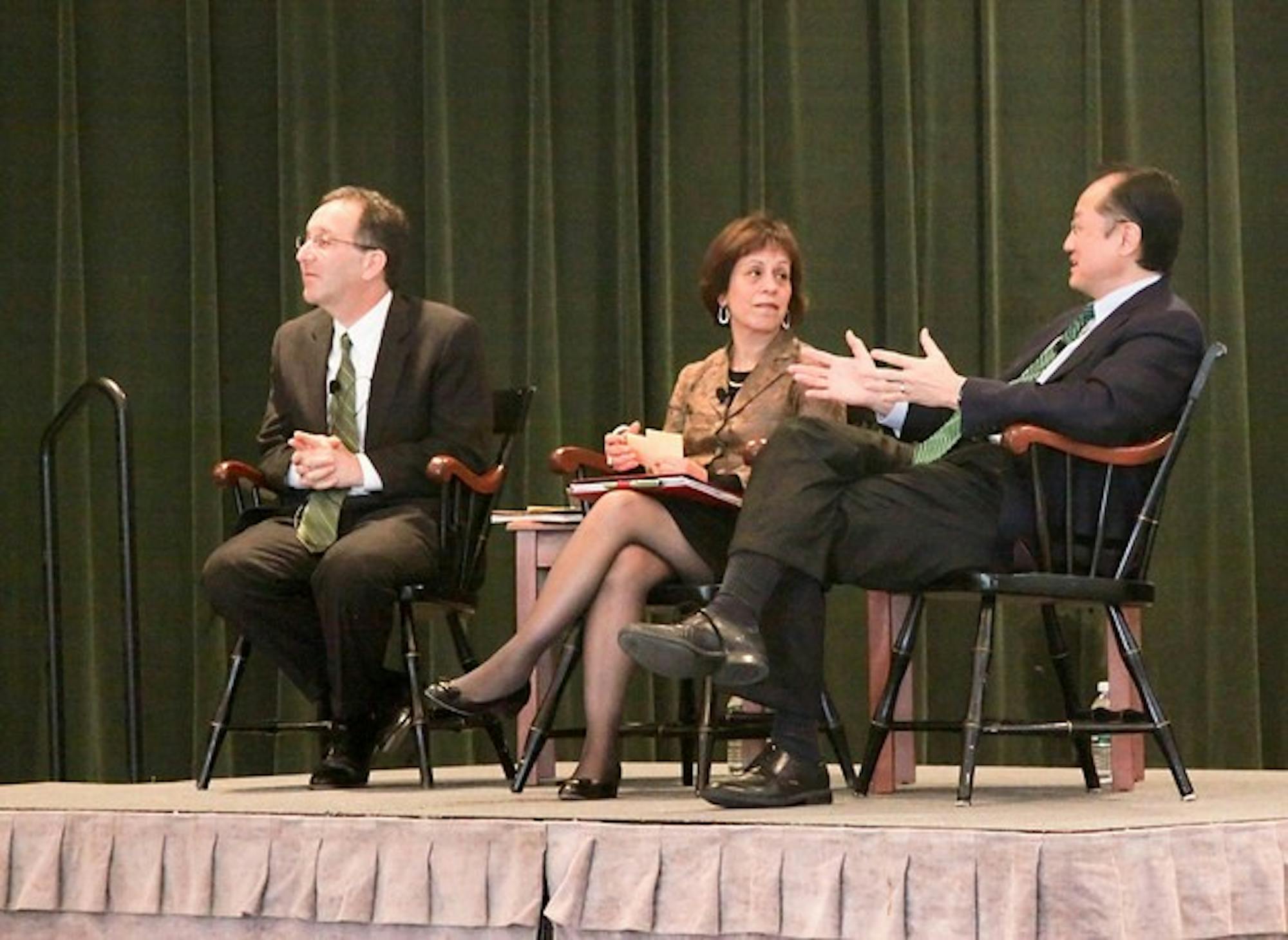"Increased [numbers of] students, even at the current level of financial aid, would be a budget positive," Kim said in the interview. "But we have to be sure that the student-teacher ratios don't go up. We have to be sure the classroom experience remains of the same quality."
The College can add students without building new residence halls, Kim said. Current projections suggest a 50-student increase per class would be feasible, Dean of the Faculty and acting Provost Carol Folt said, noting that this number is subject to change. The College will not increase the number of students without extensive discussion, Kim said.
The proposal to end Fall term before Thanksgiving break, which is currently under review by the faculty, could also save the College money, Kim said in the interview.
During the period between Thanksgiving and the start of Winter term, the College could close certain buildings to save money, perform maintenance more efficiently and use specific areas of campus for conventions, Folt said.
This adjustment would bring the College's calendar more in line with that of other institutions, making it easier for students at other colleges and universities to enroll at Dartmouth during the summer, generating revenue, Folt said.
The College will look to financial aid, employee compensation and benefits, capital projects and administrative positions as potential sources of savings, Kim said during the presentation. The College may also restructure the administration, reduce programming to lower expenses and look for new revenue sources.
More than a dozen faculty members have also expressed support for instituting a furlough faculty time off without pay senior vice president and strategic advisor Steve Kadish said in an interview with the Dartmouth.
College officials will specifically work to preserve the "Dartmouth experience," as well as the College's support for world-class research, Kim said in the presentation. Officials will also attempt to create a workplace that offers efficient administration and staff support, in addition to keeping funds available to take advantage of strategic investments if they arise in the future, he said.
Kim reiterated in the presentation that the College is keeping "everything on the table," making strategic cuts rather than cuts across the board.
While College officials will work to address budget issues immediately, Kim said Dartmouth will operate under a five-year plan, rather than merely employing short-term solutions.
Budget planners intend to develop proposals in a transparent manner, holding open discussions with different segments of the campus community prior to the February Board of Trustees meeting, Kim said.
"Today, President Kim offered the most open and comprehensive account of the budget that has ever taken place at Dartmouth or at any other institution of higher learning of which I am aware," Trustee Peter Robinson '79 said in a statement.
In the interim before the meeting, College officials will draft and prepare to implement the budget for the 2011 fiscal year, as well as analyze potential savings and revenue for both the 2011 and 2012 fiscal years, Kim said in the presentation.
The College will also implement a reduction in endowment spending, allocating 5.4 percent of the endowment to the operating budget in the 2011 fiscal year and 5.3 percent in the 2012 fiscal year.
The College currently uses a formula, which incorporates inflation and the fourth-quarter market value of the endowment, to determine endowment distribution. After the 2012 fiscal year, the College will employ a revised version of the formula to make endowment distribution more conservative in the long term.
The forced reduction of the budget's drain on the endowment over the next two years will allow the endowment to begin to recover sooner than if the College relied on the effects of the formula alone to determine endowment distribution, Kim said, adding that the plan will also allow the endowment to be more resilient in the event of future economic volatility.
The College intends to shift its investments towards public equity to increase its flexibility in managing its funds, Kadish said. The College currently invests 27 percent of the endowment in public equity, Kim said in his presentation, but Kadish said the College should ideally invest 40 percent.
"This whole presentation is really almost a teaching moment about Dartmouth financials," Kadish said. "It is about what the Dartmouth financials are and what the projections for the Dartmouth financials are. It is not a presentation of solutions to the gap. That will come, and we've begun to put together teams to work on that."




